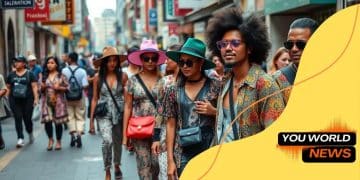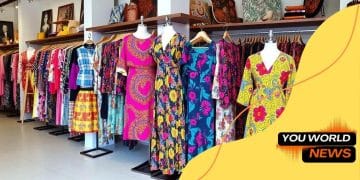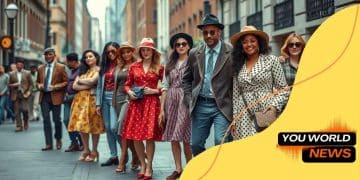The resurgence of tie-dye in fashion
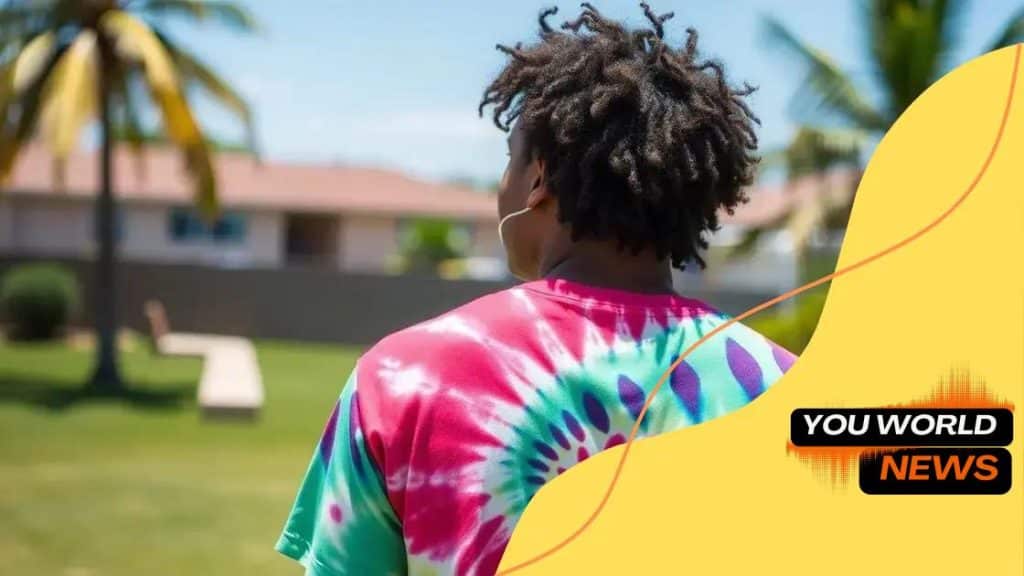
The resurgence of tie-dye in fashion highlights its cultural significance and sustainability, as consumers embrace eco-friendly practices while expressing individuality through vibrant patterns and colors.
The resurgence of tie-dye in fashion is not just a fleeting trend; it serves as a colorful expression of individuality. Have you noticed how this vibrant technique is popping up everywhere, from runways to casual wear? Let’s dive into its colorful journey.
The history of tie-dye in fashion
The history of tie-dye in fashion is a colorful tapestry that dates back thousands of years. This unique technique has evolved through various cultures and eras, each adding its own touch to this vibrant art form.
Originating in ancient civilizations, tie-dye was used to create patterns and designs on fabric. The process involves twisting, folding, or scrunching the fabric before applying dye, resulting in stunning, irregular patterns. In Asia, especially in Japan and India, this practice has been part of traditional textiles for centuries.
Modern Resurgence of Tie-Dye
Fast forward to the 1960s and 1970s, when tie-dye burst onto the Western fashion scene. The counterculture movement adopted this style as a symbol of peace and love. Vibrant colors and bold patterns represented individuality and a break from the norm.
- Popular among hippies and festival-goers.
- Typically used in casual wear, such as t-shirts and dresses.
- Associated with music festivals and the spirit of freedom.
Today, tie-dye is making a major comeback. Designers are incorporating modern twists to this traditional method. The combination of new dyeing techniques and contemporary styles has led to its resurgence in high fashion.
Influence on Contemporary Fashion
With the rise of sustainable fashion, many brands are exploring tie-dye as a way to use eco-friendly dyes and materials. This methods embrace both creativity and environmental consciousness. Young designers are experimenting with diverse color palettes, creating collections that appeal to a wide audience.
- Use of organic dyes instead of synthetic.
- Unique designs that stand out in the crowd.
- Support for local artisans and craftsmanship.
As we can see, the path of tie-dye is rich and varied. From ancient traditions to modern innovations, this method has secured its place in the fashion world. Each era has contributed to its charm, ensuring its spot in wardrobes today.
How tie-dye is being modernized today
Today, the way tie-dye is being modernized reflects current trends and values in fashion. As styles shift, this vibrant technique has adapted to meet the new tastes of consumers.
One major change is the use of advanced dyeing techniques. **Digital printing** and other methods allow for intricate designs that weren’t possible with traditional tie-dye. This innovation combines artistry with technology, making tie-dye more versatile.
Color Choices and Patterns
The color palettes have also evolved. While classic rainbow hues are still popular, designers are experimenting with sophisticated palettes. Muted tones and pastel shades bring a modern touch, elevating tie-dye from casual wear to chic fashion statements.
- Use of earth tones and muted colors.
- Incorporation of gradient effects for a softer look.
- Mixing patterns for a unique design.
Furthermore, many brands emphasize sustainability in their tie-dye practices. Utilizing organic dyes and eco-friendly materials resonates with conscious consumers. This commitment to the environment connects traditional crafting to modern ethics.
Versatile Applications
Modern tie-dye is found in a variety of clothing items. It is no longer limited to t-shirts; now you can find tie-dye on dresses, accessories, and even activewear. This versatility makes it a favorite for different occasions, from casual outings to more formal events. Retailers are expanding their collections to include everything from loungewear to high-end fashion featuring this delightful technique.
- Casual wear like sweatshirts and joggers.
- Formal pieces such as blouses and dresses.
- Accessories including bags and scarves.
As tie-dye continues to evolve, it embodies the spirit of creativity and individual expression. Consumers are eager to incorporate this fun and colorful technique into their wardrobes, making it a staple for both comfort and style.
Styling tips for incorporating tie-dye
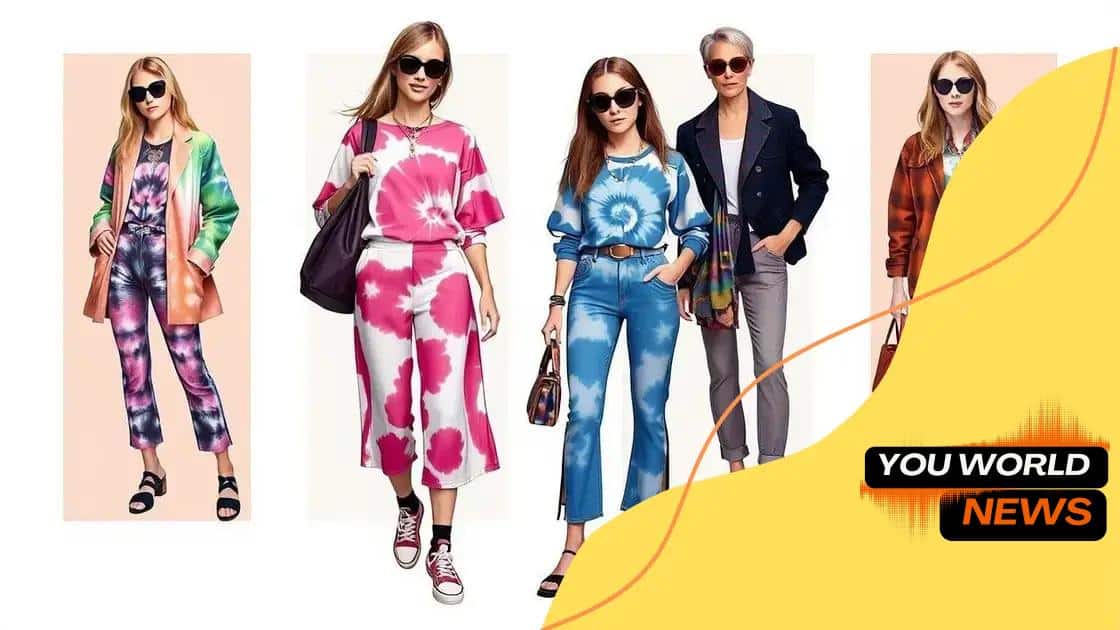
Incorporating tie-dye into your wardrobe can be fun and fashionable. This vibrant style offers a unique way to express your personality through clothing. Let’s explore some effective tips to enhance your look with tie-dye pieces.
Choose the Right Colors
When selecting tie-dye clothing, consider the colors that suit your style. Bright, bold hues can create a lively appearance, while soft pastels offer a more subtle vibe. Think about the occasions you will wear these pieces.
- Bright colors for casual outings.
- Muted tones for a polished look.
- Mixing colors for a unique statement.
Combining tie-dye with neutral colors like black or white can also balance out an outfit. This technique allows the tie-dyed items to stand out without overwhelming your look.
Mix and Match Patterns
Don’t be afraid to mix tie-dye with other patterns! Pairing it with stripes or floral prints can create an exciting contrast. However, keep your palette cohesive to ensure the outfit looks intentional.
- Use similar colors across patterns.
- Vary the scale of prints for interest.
- Layering with solids can anchor the look.
A tie-dye top with a striped skirt or a floral scarf can be a refreshing combination that showcases your creative style. Accessories can also enhance your tie-dye look, making it chic for any setting.
Accessorizing Your Tie-Dye Outfit
The right accessories can elevate your tie-dye look. Consider items that complement your clothing while adding a personal touch. Jewelry, bags, and shoes can create a cohesive outfit while allowing your personality to shine.
- Simple jewelry for a subtle touch.
- Bright bags to match tie-dye colors.
- Neutral shoes to balance the outfit.
For instance, wearing a simple necklace with a vibrant tie-dye shirt can enhance your overall style without distraction. Mixing textures, such as denim jackets with tie-dye tops, adds depth to your outfit.
Ultimately, styling tie-dye is about expressing who you are. With the right colors, patterns, and accessories, you can create stunning outfits that reflect your personality and style seamlessly.
The cultural significance of tie-dye
The cultural significance of tie-dye goes beyond mere aesthetics; it embodies a rich history and meaning in various cultures. This vibrant technique reflects personal and social expressions, making it an important facet of artistic traditions.
In many parts of the world, especially in Asia and Africa, tie-dye has been used for centuries. These patterns often tell stories or signify status. For example, in Japan, the art of tie-dye, known as shibori, involves intricate folding techniques that have been passed down through generations. Similarly, in West African cultures, handmade cloths with bright patterns speak to the region’s heritage.
Symbol of Individuality and Freedom
The rise of tie-dye in Western culture during the 1960s and 70s connected it to movements of freedom and self-expression. As part of the counterculture, tie-dye became a visual representation of the desire for peace, love, and individuality. People began to use this art form to showcase their identities and beliefs.
- Used by activists as a symbol of rebellion.
- Popularized by artists, musicians, and celebrities.
- Represented the changing social landscape of the era.
Today, tie-dye continues to resonate with younger generations as a way to promote inclusivity and creativity. It offers a canvas for personal expression in a world that values uniqueness.
Fashion and Cultural Appropriation
As tie-dye has grown in popularity, it’s essential to consider the conversations around cultural appropriation. Many designers and brands have been accused of taking elements from traditional cultures without proper acknowledgment or respect. Understanding the origins of tie-dye helps foster appreciation rather than appropriation.
- Support local artisans who practice traditional techniques.
- Recognize the history behind the art form.
- Encourage respectful representation in fashion.
By paying homage to its roots, consumers can engage with this beautiful craft while honoring the cultures that birthed it. The significance of tie-dye lies not just in its colors, but in the stories it tells and the connections it creates across cultures.
Sustainable practices in tie-dye fashion
Sustainable practices in tie-dye fashion are gaining attention as consumers become more eco-conscious. Many brands are shifting towards methods that reduce environmental impact while maintaining the beautiful artistry of tie-dye.
One primary focus is on using eco-friendly dyes. Traditional dyeing processes often rely on harmful chemicals that can affect water quality. In contrast, natural dyes derived from plants and minerals offer a safer and more sustainable alternative.
Using Organic Materials
Another important aspect is the choice of materials. Sustainable brands prioritize organic fabrics such as cotton, linen, and hemp that are grown without synthetic pesticides or fertilizers. These materials are not only better for the planet but also for the skin.
- Organic cotton is soft and durable.
- Linen has a low environmental impact.
- Hemp is resilient and biodegradable.
By using these sustainable fabrics, fashion designers can create beautiful tie-dye pieces that appeal to eco-friendly consumers.
Ethical Production Processes
Ethical production practices are also crucial in the world of sustainable fashion. Supporting local artisans and small-scale producers helps maintain traditional crafts while ensuring fair wages. Many brands are collaborating with local communities to create unique tie-dye pieces that honor cultural heritage.
- Local artisans often use traditional techniques.
- Fair trade ensures that laborers are compensated fairly.
- Supporting communities fosters economic growth.
These practices create a deep connection between the product and its origin. It allows consumers to appreciate the artistry and the stories behind each piece of tie-dye clothing.
In addition, reducing waste is essential for sustainability. Many designers are adopting a zero-waste approach, creating patterns and cuts that minimize leftover fabric. This practice not only conserves resources but also encourages creativity in design.
As the demand for sustainable fashion grows, the world of tie-dye is evolving with more environmentally-friendly practices. Consumers looking for stylish options can now make choices that are good for both their wardrobe and the planet.
FAQ – Frequently Asked Questions about Tie-Dye Fashion
What is the significance of tie-dye in culture?
Tie-dye has a rich history and is a form of artistic expression that reflects individuality and social movements, especially in the 1960s and 70s.
How can I incorporate sustainable practices in tie-dye fashion?
You can choose eco-friendly dyes, organic materials, and support local artisans to ensure your tie-dye clothing is sustainable.
What are some modern trends in tie-dye apparel?
Modern trends include using muted colors, unique patterns, and creating garments that can be worn for both casual and formal occasions.
Why is ethical production important in tie-dye fashion?
Ethical production ensures fair wages for artisans and maintains traditional crafting methods, which helps preserve the cultural significance of tie-dye.
